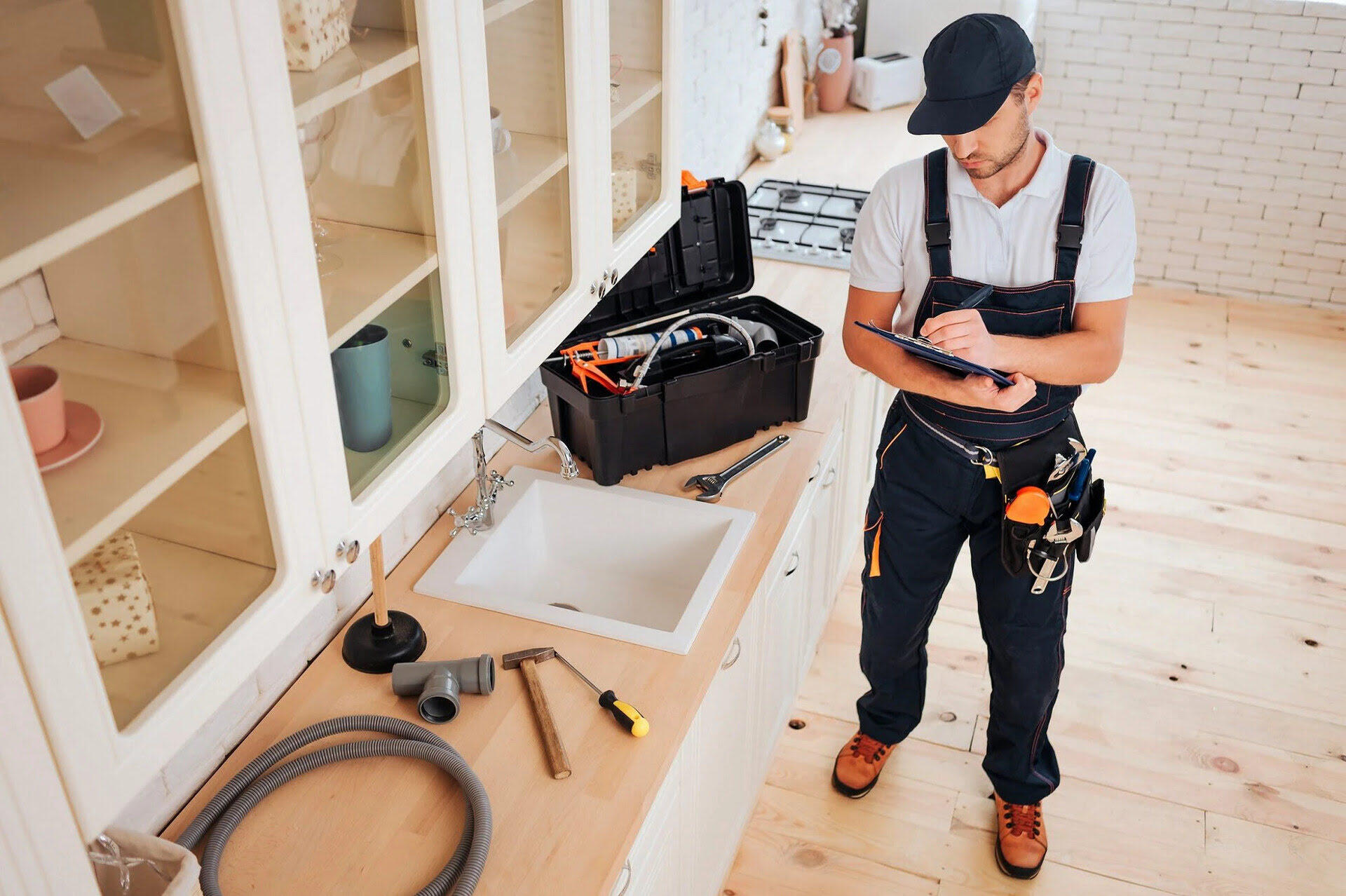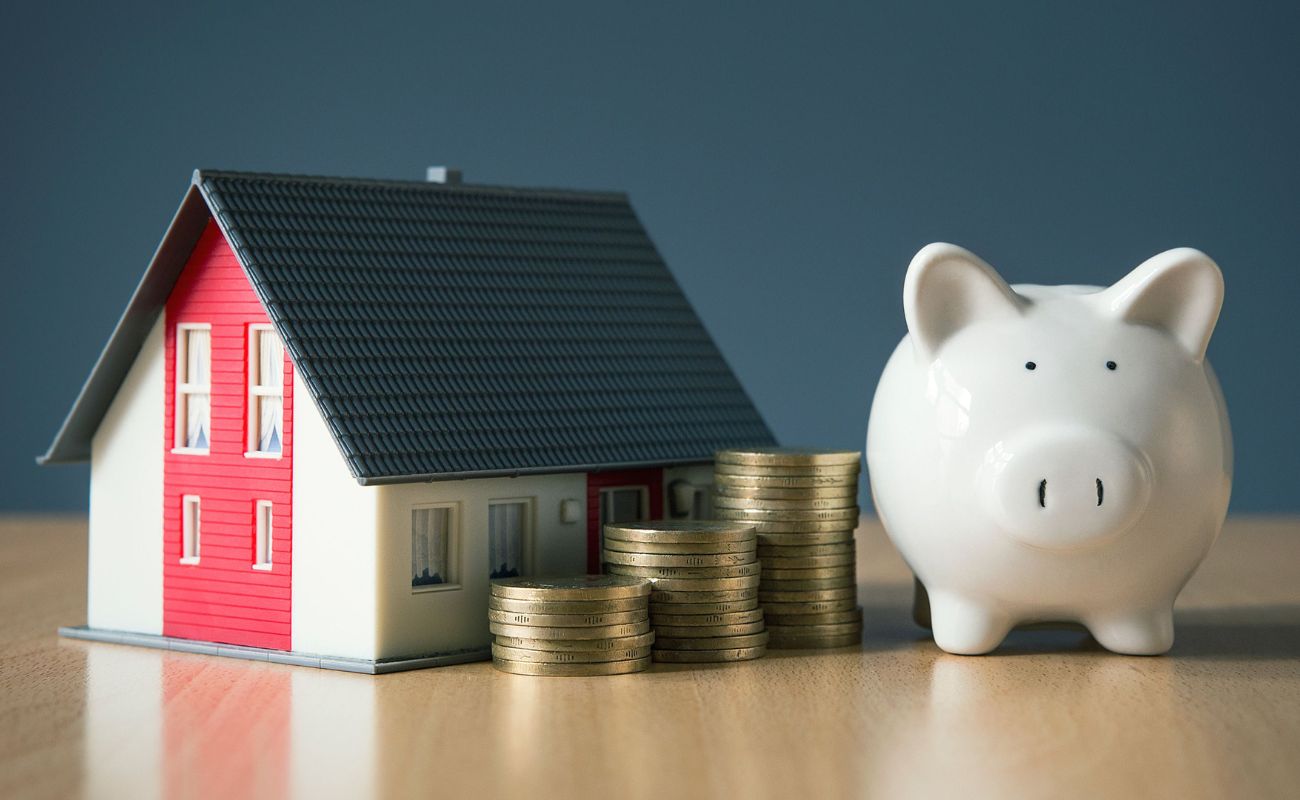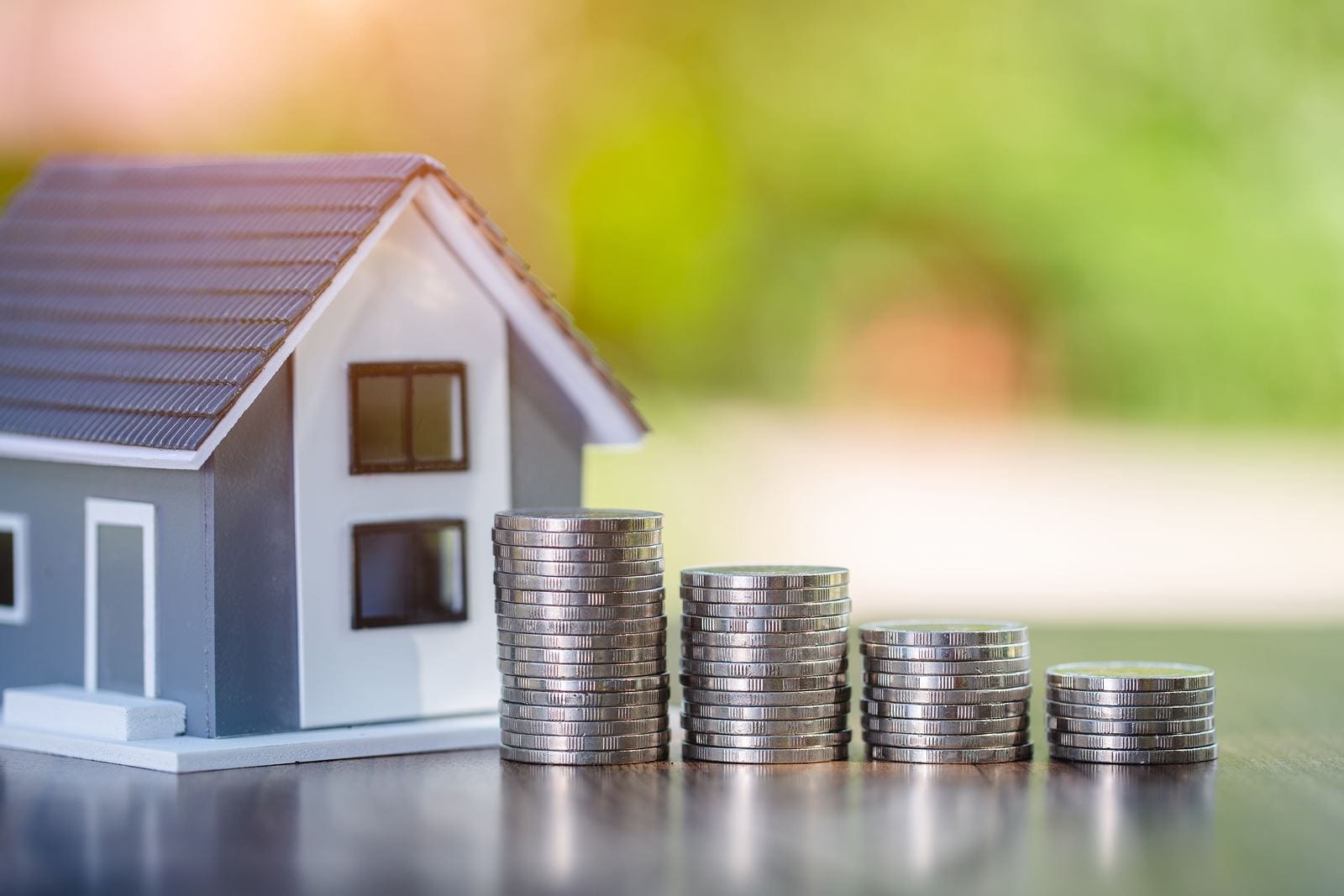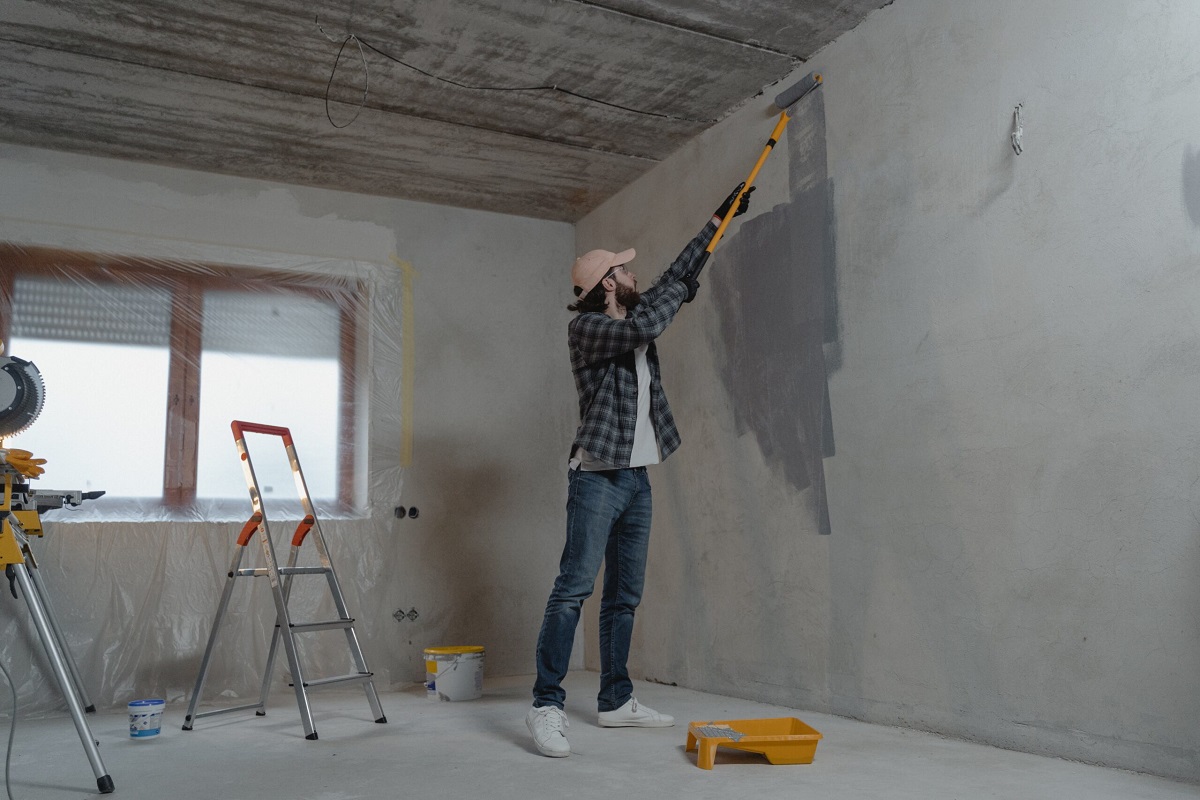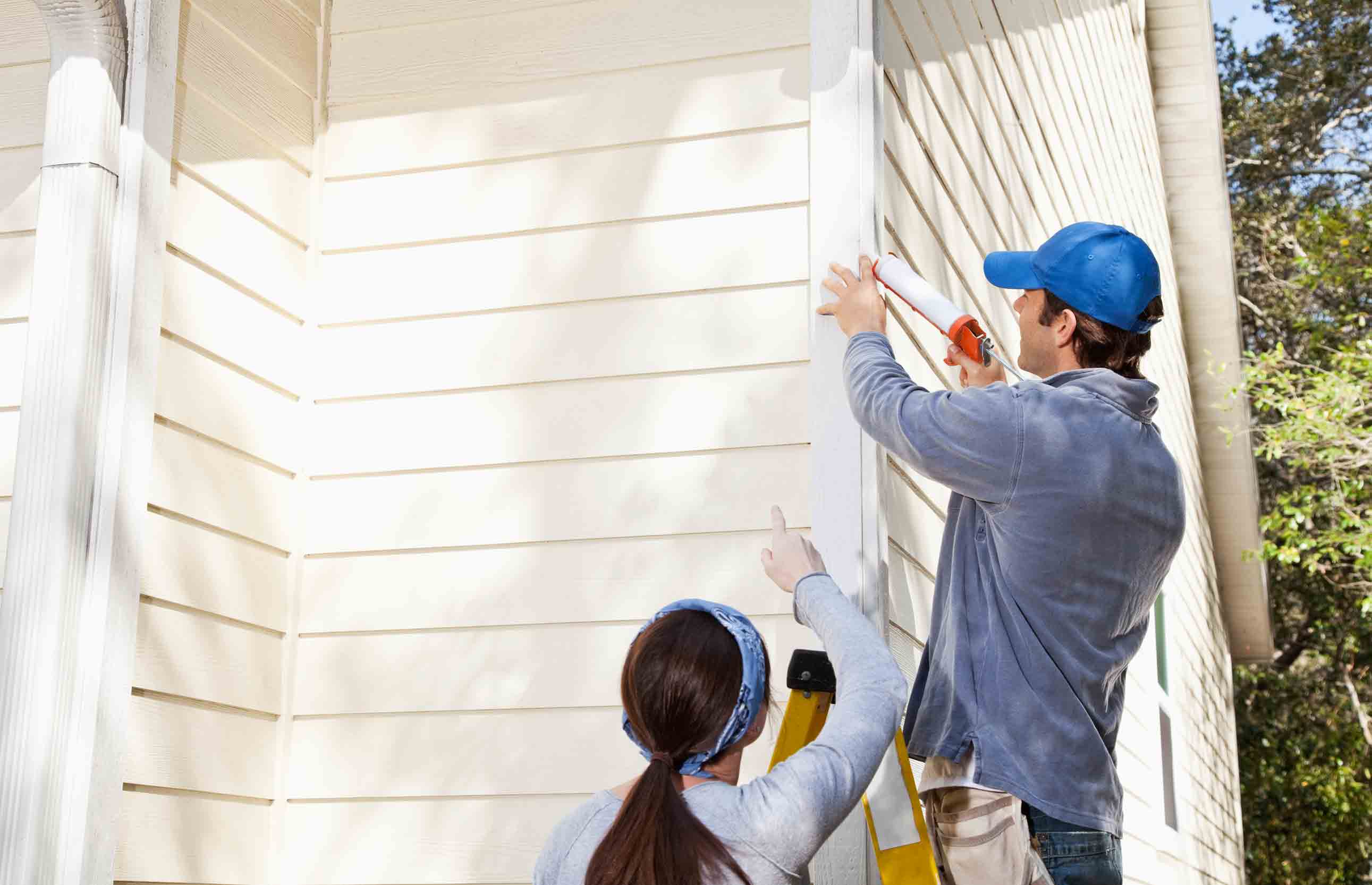Home>Home Maintenance>How To Finance Emergency Home Repair
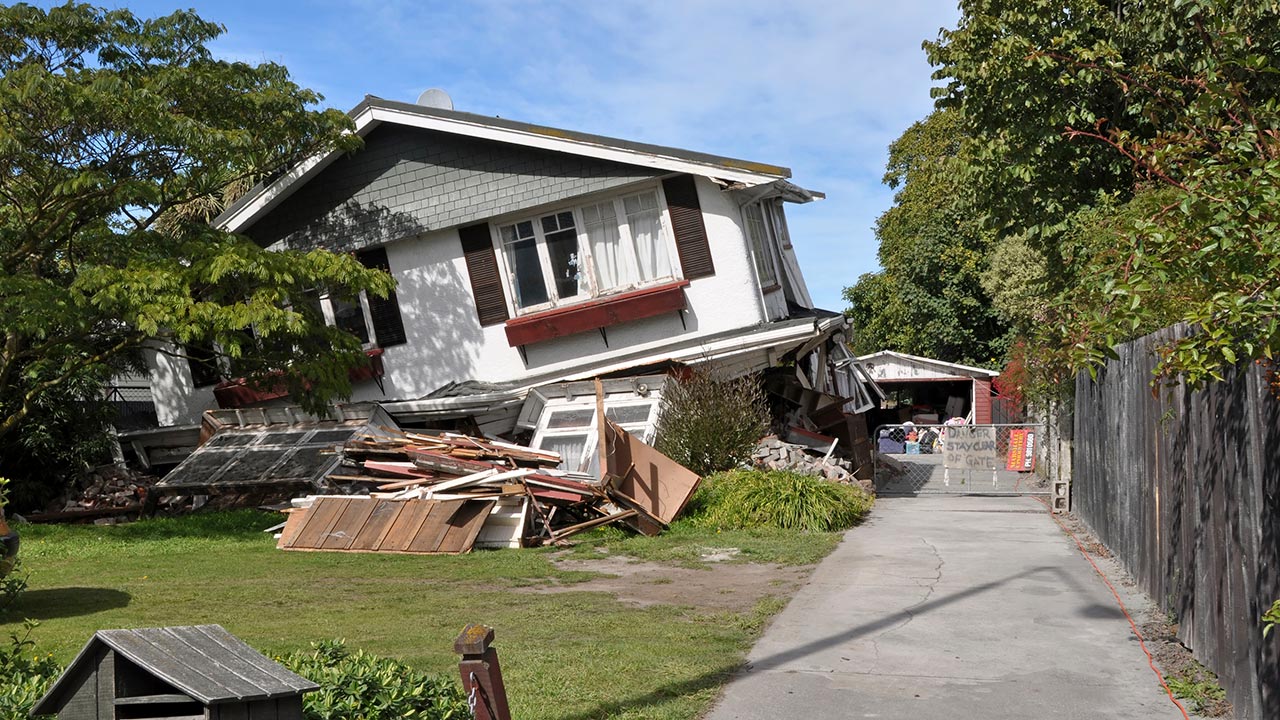

Home Maintenance
How To Finance Emergency Home Repair
Modified: August 16, 2024
Learn how to finance emergency home repair with our expert tips. Get the funds you need for unexpected home maintenance and repairs quickly and easily.
(Many of the links in this article redirect to a specific reviewed product. Your purchase of these products through affiliate links helps to generate commission for Storables.com, at no extra cost. Learn more)
Introduction
When it comes to homeownership, unexpected expenses can often arise in the form of emergency home repairs. Whether it’s a leaky roof, a burst pipe, or a malfunctioning HVAC system, these unexpected repairs can cause significant financial strain. To make matters worse, these emergencies don’t typically wait for your bank account to be fully stocked.
That’s where understanding how to finance emergency home repairs becomes crucial. By exploring various financing options and creating a strategic plan, you can alleviate the stress of these unexpected expenses and ensure the safety and sustainability of your home.
In this article, we will discuss the scope of emergency home repairs, assess the financial impact they can have, explore available financing options, and provide tips for choosing the right financing option for your specific needs.
Key Takeaways:
- Emergency home repairs can be financially stressful. Understanding financing options like loans, credit cards, and government programs can help homeowners address repairs promptly and protect their homes.
- Creating a budget and repayment plan is crucial after securing financing. It helps homeowners manage their finances effectively and ensures a smooth repayment process, leading to long-term financial stability.
Read more: How To Finance Home Improvement
Understanding the Scope of Emergency Home Repairs
Emergency home repairs can range from minor issues to major catastrophes that require immediate attention. Understanding the scope of these repairs will help you assess the financial impact they can have on your overall budget.
Common emergency home repairs include:
- Roof repairs or replacements
- Plumbing and pipe repairs
- Electrical system malfunctions
- Heating, ventilation, and air conditioning (HVAC) system failures
- Structural damage caused by natural disasters or accidents
It’s important to note that emergency home repairs can vary in cost depending on factors such as the size of your home, the complexity of the repair, and the materials needed. Minor repairs like fixing a leaky faucet may be relatively affordable, while major repairs like replacing an entire HVAC system can cost thousands of dollars.
Additionally, emergency repairs can also disrupt your daily life. For example, a broken water heater can make it impossible to take hot showers, while a damaged roof can expose your home to water damage and potentially compromise its structural integrity.
Understanding the scope and potential consequences of emergency home repairs will help you prioritize the need for immediate action and seek financing options accordingly. By addressing these repairs promptly, you can prevent further damage and potentially save money in the long run.
Assessing the Financial Impact of Emergency Home Repairs
Emergency home repairs can have a significant financial impact on your overall budget. It’s important to assess the potential costs and plan accordingly to minimize the strain on your finances.
Here are some steps to help you assess the financial impact of emergency home repairs:
- Get Multiple Quotes: Reach out to different contractors and professionals to obtain multiple quotes for the repair work needed. This will give you a better idea of the average cost and help you avoid overpaying.
- Consider Hidden Costs: In addition to the cost of materials and labor, there may be hidden costs associated with emergency repairs. For example, if your HVAC system fails in the middle of winter, you may need to stay in a hotel until it’s fixed.
- Evaluate Insurance Coverage: Review your homeowners insurance policy to determine if the repairs are covered. Some policies may cover certain types of emergencies, which can help alleviate the financial burden.
- Assess Financial Resources: Take stock of your financial resources and determine how much you can contribute towards the repairs. This includes any emergency savings, available credit, or other financial assets.
- Consider Long-Term Savings: While emergency repairs may require upfront costs, it’s important to consider the long-term savings they can provide. For example, investing in energy-efficient HVAC systems or roofing materials may reduce future utility bills and maintenance expenses.
By assessing the potential financial impact of emergency home repairs, you’ll have a better understanding of your financial situation and can make informed decisions when it comes to financing options.
Exploring Available Financing Options
Once you have assessed the financial impact of emergency home repairs, it’s time to explore the various financing options available to you. By understanding these options, you can choose the one that best fits your needs and financial situation.
Here are some common financing options to consider:
- Traditional Home Improvement Loans: These are fixed-rate loans specifically designed for home improvement projects. They typically have longer repayment terms and lower interest rates compared to personal loans. However, they may require you to have a certain level of equity in your home.
- Personal Loans: Personal loans are unsecured loans that can be used for a variety of purposes, including emergency home repairs. They have a fixed interest rate and a set repayment period. Personal loans can be obtained from banks, credit unions, or online lenders.
- Home Equity Line of Credit (HELOC): A HELOC allows you to borrow against the equity in your home. It functions like a credit card, where you can borrow and repay as needed. HELOCs typically have variable interest rates and a draw period followed by a repayment period.
- Credit Cards: If the repairs are relatively minor and the cost is manageable, using a credit card can be a convenient option. However, be mindful of high-interest rates and make a plan to pay off the balance as quickly as possible to avoid accumulating debt.
- Government Assistance Programs: Depending on your location and circumstances, there may be government programs or grants available to help with emergency home repairs. These programs typically have eligibility criteria and may require a lengthy application process.
- Crowdfunding and Fundraising: In some cases, individuals turn to crowdfunding platforms or local community organizations to raise funds for their emergency home repairs. This option requires proactive outreach and a compelling story to attract donors.
Each financing option has its own advantages and considerations. It’s important to carefully evaluate the terms, interest rates, repayment terms, and eligibility requirements before making a decision.
Next, we will discuss creating a budget and repayment plan to ensure you can successfully manage the financing option you choose for emergency home repairs.
Traditional Home Improvement Loans
One option for financing emergency home repairs is a traditional home improvement loan. These loans are specifically designed for home improvement projects and can provide you with the necessary funds to address your repair needs.
Here’s what you need to know about traditional home improvement loans:
- Loan Structure: Traditional home improvement loans are typically installment loans, meaning you borrow a specific amount of money and repay it in fixed monthly installments over a predetermined period of time.
- Collateral Requirement: These loans may require you to use your home as collateral. This means that if you fail to repay the loan, the lender may have the right to seize your home.
- Interest Rates and Terms: Interest rates for traditional home improvement loans are generally lower compared to personal loans or credit cards. The exact interest rate you qualify for will depend on factors such as your credit score, income, and the amount of equity you have in your home. Loan terms can range from a few years to several decades.
- Loan Amount: The amount you can borrow through a traditional home improvement loan will depend on the lender and your financial situation. Lenders typically consider factors such as the value of your home, the equity you have, and your ability to repay the loan.
- Upsides: Traditional home improvement loans offer the advantages of lower interest rates, longer repayment terms, and the ability to finance larger projects. They also provide a structured repayment plan, making it easier to budget for the monthly payments.
- Considerations: It’s important to carefully evaluate your financial situation before taking out a home improvement loan. Consider factors such as the cost of the repairs, the loan amount you can qualify for, and your ability to comfortably repay the loan without straining your budget.
When considering a traditional home improvement loan, shop around and compare offers from different lenders. Look for competitive interest rates, favorable terms, and reputable lenders who specialize in home improvement financing.
Overall, traditional home improvement loans can be a viable option for financing emergency home repairs, especially for homeowners who have sufficient equity in their homes and desire a structured repayment plan with lower interest rates.
Read more: How To Finance Home Renovations
Personal Loans
When it comes to financing emergency home repairs, personal loans are another option to consider. Personal loans are unsecured loans that can be used for a variety of purposes, including home repairs. Here’s what you need to know about personal loans:
- Loan Structure: Personal loans are installment loans, meaning you borrow a specific amount of money and repay it in fixed monthly installments over a set period of time. The repayment terms typically range from a few months to several years.
- Collateral Requirement: Unlike traditional home improvement loans, personal loans are unsecured. This means there is no collateral required, such as your home or other assets. However, keep in mind that unsecured loans usually come with higher interest rates compared to secured loans.
- Interest Rates and Terms: Interest rates for personal loans can vary depending on factors such as your credit score, income, and the lender’s policies. It’s important to shop around and compare interest rates and terms from different lenders to ensure you get the most favorable rates possible.
- Loan Amount: The loan amount you can qualify for with a personal loan will depend on your income, creditworthiness, and the lender’s criteria. Personal loans typically range from a few thousand dollars to tens of thousands of dollars.
- Upsides: Personal loans offer flexibility in terms of use, as they can be used for any purpose, including emergency home repairs. They are also relatively quick and easy to obtain, with a streamlined application process and faster approval times compared to other loan types.
- Considerations: As with any loan, it’s important to carefully consider the terms and conditions of personal loans. Pay attention to the interest rates, fees, and repayment terms, and ensure that the loan repayment fits comfortably within your budget.
When considering a personal loan for emergency home repairs, it’s recommended to compare offers from multiple lenders to find the most competitive rates and terms. Additionally, maintaining a good credit score can increase your chances of qualifying for favorable loan terms.
Personal loans can be a suitable option if you need to fund your emergency repairs quickly and don’t want to use your home as collateral. However, it’s essential to carefully assess your ability to repay the loan on time to avoid unnecessary financial strain.
Home Equity Line of Credit (HELOC)
If you’re a homeowner looking for a flexible financing option for emergency home repairs, a Home Equity Line of Credit (HELOC) can be a viable solution. Here’s what you need to know about HELOCs:
- Loan Structure: A HELOC is a revolving line of credit that allows you to borrow against the equity in your home. It functions similarly to a credit card, where you have a set credit limit and can borrow and repay as needed during a specific draw period.
- Collateral Requirement: HELOCs require your home to serve as collateral. This means that if you fail to repay the loan, the lender has the right to foreclose on your property.
- Interest Rates and Terms: HELOCs typically have variable interest rates, meaning that the rate can fluctuate over time. The initial interest rate is often lower than other loan options, but it can increase during the repayment period. HELOCs have a draw period, during which you have access to the funds, followed by a repayment period, where you make fixed monthly payments.
- Loan Amount: The amount you can borrow with a HELOC depends on factors such as the appraised value of your home, the outstanding mortgage balance, and your creditworthiness. Generally, lenders allow you to borrow up to a certain percentage of your home’s appraised value, minus the outstanding mortgage balance.
- Upsides: HELOCs offer flexibility in terms of borrowing and repaying the funds. You can draw from the line of credit as needed and only pay interest on the amount borrowed. Additionally, HELOCs may have tax advantages, as the interest paid on the loan can be tax-deductible in certain situations.
- Considerations: It’s crucial to carefully consider the terms and conditions of a HELOC. Pay attention to the interest rate fluctuations, fees, repayment terms, and any potential penalties for early repayment. Additionally, borrowing against your home’s equity means taking on additional debt and risking foreclosure if you fail to make the required payments.
Before applying for a HELOC, it’s essential to evaluate your financial situation and determine if you have a steady income and the ability to repay the loan. Additionally, compare offers from different lenders to find competitive rates and terms.
A Home Equity Line of Credit (HELOC) can be a suitable option for homeowners who need flexible access to funds for emergency home repairs. However, it’s important to use the line of credit responsibly and make prompt repayments to mitigate the risk of losing your home.
Consider setting up an emergency fund specifically for home repairs. Start by setting aside a small amount each month to build up a fund for unexpected expenses.
Credit Cards
When it comes to financing emergency home repairs, using credit cards can be a convenient option, especially for smaller repairs or immediate needs. Here’s what you need to know about using credit cards for home repairs:
- Convenience and Accessibility: Credit cards offer convenience and easy access to funds in times of emergency. If you already have a credit card with an available credit limit, you can use it to cover the costs of home repairs without the need for additional loan applications.
- Interest Rates and Fees: Credit cards typically come with higher interest rates compared to other loan options. If you plan to carry a balance on your credit card, be prepared for the interest charges that will accrue over time. Additionally, credit cards may have annual fees and other associated costs.
- Repayment Flexibility: Credit cards provide flexibility in terms of repayment. You can choose to pay off the balance in full each month or make minimum payments over time. However, it’s crucial to note that making only minimum payments can lead to higher interest charges and a longer repayment period.
- Credit Limit Considerations: Before using a credit card for home repairs, consider your available credit limit. Ensure that you have enough available credit to cover the costs of the repairs without maxing out your credit card and potentially damaging your credit score.
- Rewards and Benefits: Some credit cards offer rewards programs or benefits such as cashback or travel points. If you have a rewards credit card, using it for home repairs can earn you rewards on your spending. However, it’s important not to let the potential rewards override the importance of responsible borrowing and repayment.
- Considerations: While credit cards can provide quick access to funds, they can also lead to high-interest debt if not used responsibly. It’s crucial to have a plan in place to pay off the balance promptly to avoid accumulating excessive interest charges. If you cannot afford to repay the amount within a reasonable time frame, it’s worth considering other financing options with lower interest rates.
If you choose to use a credit card for emergency home repairs, make sure to compare credit card options and carefully read the terms and conditions. Look for cards with low-interest promotions or consider using an existing card with a lower interest rate.
Overall, credit cards can be a suitable option for smaller emergency home repairs or immediate needs, provided you have a plan to repay the balance in a timely manner. Responsible credit card usage is essential to avoid excessive debt and protect your overall financial well-being.
Government Assistance Programs
If you’re facing financial constraints and need assistance with emergency home repairs, government assistance programs can provide valuable support. These programs aim to help homeowners who are unable to afford necessary repairs. Here’s what you need to know about government assistance programs for home repairs:
- Program Availability: Government assistance programs vary by location and are often administered at the state or local level. Research and reach out to your local government agencies or housing departments to inquire about available programs in your area.
- Eligibility Criteria: Each program has specific eligibility criteria that determine who qualifies for assistance. Typically, these criteria consider factors such as income level, homeownership status, age of the property, and the nature of the repairs needed.
- Types of Assistance: Government programs may offer various forms of assistance, such as grants, low-interest loans, or forgivable loans. The type and amount of assistance provided will depend on the program and individual circumstances.
- Application Process: Applying for government assistance programs usually involves submitting an application and supporting documentation that proves your eligibility. The application process may require you to provide income verification, property information, and details about the repairs needed.
- Timeframe and Availability: It’s essential to note that government assistance programs often have limited funding and may have longer processing times. Additionally, the availability of funds varies, so it’s advisable to apply as early as possible and be prepared for potential waiting periods.
- Additional Resources: In addition to government assistance programs, there may be local nonprofit organizations or charities that provide aid for home repairs. Research and reach out to these organizations to explore potential resources in your community.
Keep in mind that government assistance programs are typically designed to help individuals with limited financial means or those facing specific difficulties. It’s important to carefully review the program guidelines, understand the terms and conditions, and meet all requirements to maximize your chances of qualifying for assistance.
If you believe you may be eligible for a government assistance program, contact your local housing department or visit their website to gather more information about the available programs and the application process. These programs can provide a valuable lifeline for homeowners in need of financial support for emergency home repairs.
Read more: How To Secure Financing For Home Projects
Crowdfunding and Fundraising
If you’re in need of financial assistance for emergency home repairs and don’t qualify for traditional loans or government programs, crowdfunding and fundraising can be alternative options to explore. These methods allow you to reach out to friends, family, and the broader community for support. Here’s what you need to know about crowdfunding and fundraising for home repairs:
- Crowdfunding Platforms: Crowdfunding platforms, such as GoFundMe or Kickstarter, provide a digital platform where you can create a campaign to share your story and raise funds. These platforms allow you to reach a wider audience and provide a convenient way for people to contribute.
- Local Community: Engaging with your local community can be another effective way to raise funds for home repairs. Consider organizing events, such as garage sales, bake sales, or charity auctions, where the proceeds go towards your repair expenses. Additionally, reach out to community organizations, churches, or clubs that may be willing to offer support or host fundraising events on your behalf.
- Online Networks: Leverage your social media networks, such as Facebook, Twitter, or Instagram, to share your story and solicit donations. Use engaging storytelling, images, and videos to capture people’s attention and encourage them to contribute to your cause.
- Communicate the Need: When seeking crowdfunding or fundraising support, it’s crucial to clearly communicate the nature of your emergency repair needs, the financial impact they have on you, and why the assistance is critical. Personalize your message and highlight the urgency and importance of the repairs.
- Show Gratitude: Express gratitude to your supporters by regularly updating them on the progress of your repairs and acknowledging their contributions. Consider offering small tokens of appreciation, such as personalized thank-you notes or hosting a gathering to celebrate the successful completion of the repairs.
- Transparency and Accountability: Since people are trusting you with their financial support, it’s important to maintain transparency and accountability throughout the process. Provide regular updates on how the funds are being used and be open to answering any questions or concerns from your donors.
When embarking on crowdfunding or fundraising efforts, remember that success often relies on building strong connections, leveraging personal networks, and effectively sharing your story. Be prepared to invest time and effort in promoting your campaign and engaging with potential supporters.
It’s important to note that crowdfunding and fundraising may not be guaranteed solutions for funding your home repairs. The success of these methods depends on various factors, including the reach of your network, the compellingness of your story, and the willingness of others to contribute.
Nevertheless, when utilized effectively, crowdfunding and fundraising can provide valuable financial support for emergency home repairs, while also bringing the community together to rally behind a common cause.
Creating a Budget and Repayment Plan
After securing financing for your emergency home repairs, it’s important to create a budget and repayment plan to ensure you can manage the financial obligations effectively. Here are some steps to help you create a budget and repayment plan:
- List Your Expenses: Start by listing all your regular monthly expenses, including mortgage or rent payments, utilities, groceries, transportation, and other necessary expenses. This will give you a clear overview of your current financial commitments.
- Factor in the Repayment Amount: Determine the monthly repayment amount for your financing option, whether it’s a loan or a credit card. Include this amount in your list of expenses to ensure it’s accounted for in your budget.
- Identify Areas to Cut Back: Review your expenses and identify areas where you can cut back to free up additional funds for loan repayment. This may involve reducing discretionary spending on entertainment, dining out, or non-essential purchases.
- Create a Repayment Timeline: Determine a realistic timeline for repaying the loan or credit card debt. Consider factors such as your income, the interest rate, and your ability to make larger or additional payments to expedite the repayment process. Set measurable goals to track your progress.
- Build an Emergency Fund: As you create your budget and repayment plan, it’s essential to prioritize building an emergency fund. Having a financial buffer can help you better handle future unexpected expenses without relying on credit or loans.
- Seek Professional Financial Advice: If you find it challenging to create a budget and repayment plan on your own, consider seeking the assistance of a financial advisor. They can provide personalized guidance and help create a plan that suits your specific financial circumstances.
Remember, sticking to your budget and repayment plan requires discipline and commitment. It’s important to stay motivated, track your progress, and make adjustments as needed to ensure you’re on track to meet your financial goals.
Additionally, consider exploring ways to increase your income by taking on additional part-time work, freelancing, or selling unwanted items. Any extra income can be directed towards your loan repayment, helping you pay off the debt faster.
By creating a budget and repayment plan, you can effectively manage your finances while repaying your loan or credit card debt. Taking control of your financial situation will not only help you successfully navigate your current emergency home repairs but also set a strong foundation for your future financial well-being.
Tips for Choosing the Right Financing Option
When it comes to financing emergency home repairs, choosing the right option is crucial to ensure you can manage the financial obligations effectively. Here are some tips to help you select the right financing option:
- Evaluate Your Financial Situation: Before choosing a financing option, evaluate your current financial situation. Consider factors such as your income, credit score, savings, and existing debts. Understanding your financial standing will help you determine the type of loan or credit you’re eligible for.
- Assess the Cost of Repairs: Determine the total cost of your emergency home repairs. This will help you ascertain whether you need a short-term loan or a more long-term financing option. Understanding the cost upfront will also help you compare the different financing options available.
- Consider Interest Rates and Terms: Compare the interest rates, fees, and repayment terms of each financing option. Calculate the total amount you’ll repay over the loan term to get a clear picture of the overall cost. Choose an option with reasonable interest rates and terms that fit comfortably within your budget.
- Weigh the Risks: Assess the risks associated with each financing option. For example, with a home equity loan, there’s a risk of losing your home if you’re unable to make the payments. Consider your comfort level with risk and choose an option that aligns with your financial goals and risk tolerance.
- Read the Fine Print: Carefully read and understand the terms and conditions of the loan or credit agreement. Look for any hidden fees, penalties for early repayment, or other potential pitfalls. Ensure you are aware of all the details before committing to a specific financing option.
- Seek Professional Advice: If you’re unsure about which financing option is best for you, consider consulting with a financial advisor. They can provide personalized advice based on your specific circumstances and guide you towards the most suitable option.
- Consider Future Financial Goals: Take into account your long-term financial goals when choosing a financing option. If you have other financial aspirations, such as saving for retirement or buying a new home, consider how the repayment of your emergency loan or credit will impact those goals.
By following these tips, you can make an informed decision when choosing the right financing option for your emergency home repairs. Remember, it’s essential to choose an option that not only meets your immediate financial needs but also aligns with your long-term financial goals and capabilities.
Take the time to research and compare different options, and don’t hesitate to seek expert advice to ensure you’re making the best choice for your financial well-being.
Conclusion
When faced with emergency home repairs, it’s important to understand your financing options and choose the one that best suits your needs and financial situation. Assessing the scope of the repairs and evaluating the financial impact will help you determine the urgency and scale of your funding needs.
Exploring options such as traditional home improvement loans, personal loans, home equity lines of credit (HELOCs), credit cards, government assistance programs, crowdfunding, and fundraising can provide the necessary funds to address the repairs. Each option has its own advantages, considerations, and eligibility criteria.
Creating a budget and repayment plan is crucial to effectively manage the financial obligations that come with your chosen financing option. Assess your income, expenses, and possible areas for cost-cutting to allocate funds towards loan repayment. Seeking professional financial advice and sticking to your plan will ensure a smooth repayment process.
Consider important factors when choosing the right financing option, such as interest rates, terms, eligibility criteria, risks, and future financial goals. Carefully read the fine print of loan agreements and seek guidance if needed to make an informed decision.
In conclusion, by understanding the scope of emergency home repairs, assessing the financial impact, exploring the available financing options, and creating a budget and repayment plan, you can successfully finance and manage the repairs while maintaining financial stability.
Remember, it’s important to prioritize timely repairs to protect the value and safety of your home. By taking proactive steps and making strategic financial decisions, you can overcome the financial challenges of emergency home repairs and ensure the well-being of your home and your peace of mind.
Frequently Asked Questions about How To Finance Emergency Home Repair
Was this page helpful?
At Storables.com, we guarantee accurate and reliable information. Our content, validated by Expert Board Contributors, is crafted following stringent Editorial Policies. We're committed to providing you with well-researched, expert-backed insights for all your informational needs.
